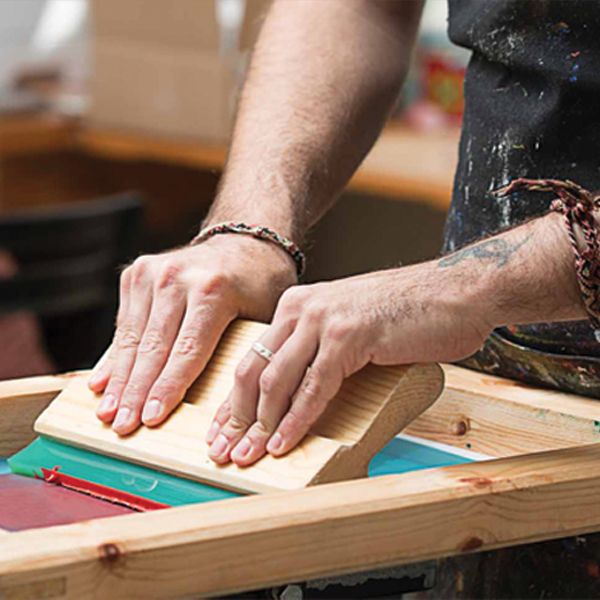Screen printing is a popular method of printing that is widely used to create high-quality designs on various surfaces such as paper, fabric, and even glass. Glass-screen printing is a unique technique that requires special skills and knowledge to produce excellent results. In this blog post, we will delve into the art of glass-screen printing, its benefits, and how it works.

What is Glass-Screen Printing?
Glass-screen printing involves using a mesh stencil (also known as a screen) to apply ink onto a glass surface. The stencil has a design or pattern that is transferred onto the glass using a squeegee. This method of printing is ideal for creating complex designs, patterns, texts, or even photographs on glass.
The ink used for glass-screen printing is specially formulated to adhere to the glass surface. It is also durable and resistant to fading, making it ideal for outdoor or high-traffic areas. Depending on the design and complexity of the project, various techniques can be used to achieve a desired effect.
Primary Techniques for Glass-Screen Printing
Screen Printing:
This is the primary method used in glass-screen printing. The process involves creating stencils from a mesh screen and transferring the design onto the glass surface using a squeegee. The design is applied in layers, allowing the ink to dry between each application. This technique is ideal for producing complex designs with precise details and colors.
Sandblasting:
This method involves using a high-pressure stream of sand to create a design or pattern on glass. The stencil is applied to the glass surface using a special adhesive, and the areas not covered by the design are blasted away. The end result is a frosted finish that enhances the visual appeal of the glass.
Acid Etching:
This is a chemical process that involves applying an acid solution onto the glass surface to create a design or pattern. The acid "eats away" at the unprotected areas, leaving the design in relief. This technique is ideal for producing intricate designs or patterns that cannot be achieved with screen printing or sandblasting.
Benefits of Glass-Screen Printing
Glass-screen printing has several benefits, including:
Durability:
Glass-screen printing uses specialized inks that adhere well to glass surfaces, making the designs long-lasting and resistant to fading. This makes it an ideal method for outdoor or high-traffic areas.
Versatility:
Glass-screen printing can be used to create a wide range of designs, from simple patterns to complex images. It is also suitable for both large and small-sized projects.
Visual Appeal:
Glass-screen printing adds a unique touch to glass surfaces, enhancing their visual appeal and making them more attractive and eye-catching.
Conclusion
Glass-screen printing is a fascinating technique that produces stunning results on glass surfaces. Whether you are a beginner or an experienced glass artist, learning the art of glass-screen printing can add a new dimension to your work. The primary techniques involve screen printing, sandblasting, and acid etching, all of which produce high-quality designs that are both durable and visually appealing. If you are interested in exploring this art form, consider enrolling in a glass-screen printing course such as the one offered by Kent Adult Education.